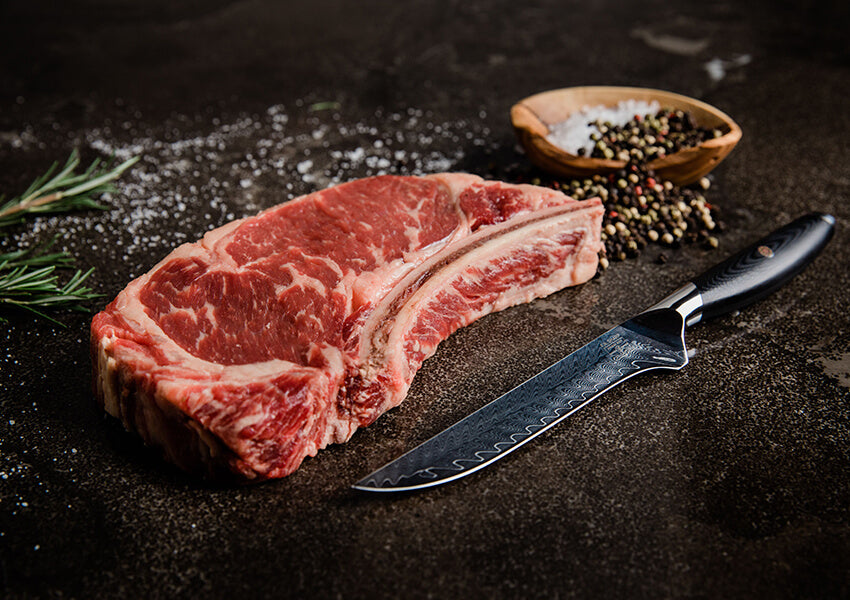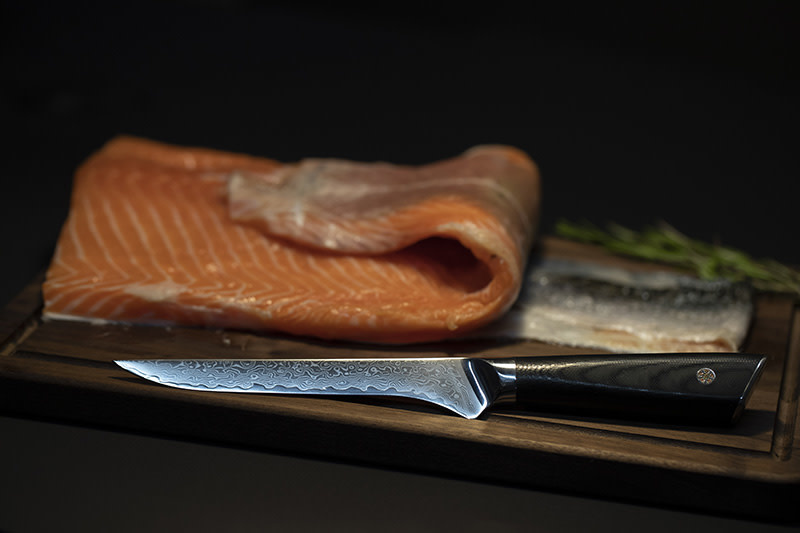The wide boning knife is an essential tool for both professional chefs and home cooks. Its unique design and functionality make it indispensable in the kitchen. This article delves into the versatility and applications of the wide boning knife, ensuring that you have a comprehensive understanding of its use.

What is a Wide Boning Knife?
A wide boning knife is characterized by a broad and sturdy blade, which is typically more rigid than other types of boning knives. This design allows it to efficiently separate meat from bone, particularly in larger cuts of meat and poultry.
Features of a Wide Boning Knife
Blade Design
The blade of a wide boning knife is wider and more robust, providing greater leverage and control when cutting through thick cuts of meat.
Handle Comfort
Ergonomically designed handles ensure a comfortable grip, reducing hand fatigue during prolonged use.
Material Quality
High-quality stainless steel blades are common, offering durability and resistance to rust and corrosion.
Benefits of Using a Wide Boning Knife
Efficiency in the Kitchen
With its sturdy blade, the wide boning knife makes quick work of separating meat from bone, saving time and effort in meal preparation.
Precision Cutting
The design of the wide boning knife allows for precise cuts, minimizing waste and ensuring clean meat separation.
Versatility
Beyond boning, this knife can also be used for slicing and trimming fat, making it a versatile addition to any kitchen.
How to Choose the Right Wide Boning Knife
Consider the Blade Size
Choose a blade size that matches your typical kitchen tasks. Larger blades are suited for big cuts of meat, while smaller ones offer more precision.
Handle Preference
Opt for a handle that feels comfortable in your hand and offers a non-slip grip for safety.
Material Matters
Invest in a knife made from high-quality materials to ensure longevity and performance.
Proper Care and Maintenance
Cleaning Tips
Hand wash your wide boning knife with warm, soapy water and dry immediately to prevent rust.
Sharpening Techniques
Regularly hone the blade to maintain its sharpness. For detailed guidance, you can refer to honing a boning knife.
Storage Solutions
Store knives in a knife block or magnetic strip to keep them safe and accessible.
Applications of a Wide Boning Knife
Boning Poultry
The wide blade is perfect for deboning chicken and turkey, ensuring clean cuts and minimal waste.
Handling Large Cuts of Meat
From beef to pork, this knife excels in separating meat from bone in larger cuts. Learn more about its use with pork here.
Trimming and Slicing
In addition to boning, the knife is ideal for trimming fat and slicing meat, making it a multifunctional tool.
Common Mistakes to Avoid
Incorrect Blade Size
Using the wrong blade size can lead to inefficient cutting and potential accidents.
Poor Maintenance
Neglecting regular cleaning and sharpening can reduce the knife’s effectiveness and lifespan.
Improper Storage
Storing knives loosely can lead to dulling and damage; use proper storage solutions instead.

FAQs About the Wide Boning Knife
What makes a wide boning knife different from other knives?
The wide blade and rigid design make it ideal for separating meat from bone, particularly in larger cuts.
Can I use a wide boning knife for everyday kitchen tasks?
Yes, it’s versatile enough for trimming, slicing, and other tasks beyond boning.
How often should I sharpen my wide boning knife?
Regular honing is recommended after every few uses, with professional sharpening every few months.
For a detailed guide on using a boning knife, you can visit this external resource.
This article contains affiliate links. We may earn a commission at no extra cost to you.


